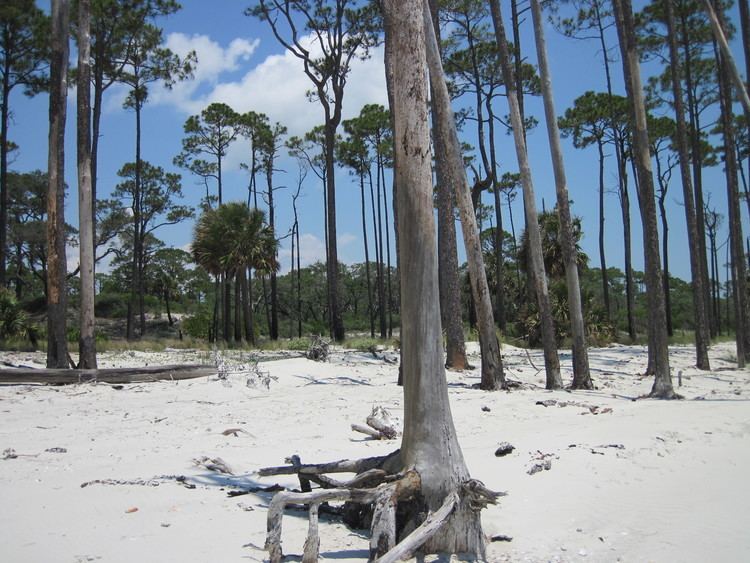 | ||
St. Vincent Island is the westernmost of 4 barrier islands in the northwestern Florida Gulf coast which include Cape St. George Island, St. George Island and Dog Island. St. Vincent Island is located just offshore in Franklin County, Florida south southeast of Cape San Blas and north of Cape St. George Island close to the mouth of the Apalachicola River and the town of Apalachicola on the Florida Panhandle.
Contents
Map of St. Vincent Island, Florida, USA
HistoryEdit
St. Vincent was inhabited as far back as 240 A.D. In 1633, Franciscan Friars named the island while visiting Apalachee tribes in the area.
In 1750, Creek Indians and Seminoles, offshoots of the Creek nation, entered area and inhabited the island.
In 1868, George Hatch bought the island.
In 1908, Dr. Ray V. Pierce imported Old World game animals to the island. In 1920 the island was used to graze beef cattle sold to Apalachicola markets.
In 1940, the first oyster lease was granted. The Pierce Estate sold first pine saw timber. St. Joe Lumber Company built a temporary bridge to the island for timber removal.
In 1948, the Loomis brothers bought the island and imported zebras, elands, black buck, ring-necked pheasants, Asian jungle fowl, bobwhite quail, and semi-wild turkeys.
In 1968 St Vincent was purchased by the Nature Conservancy for $2.2 million. U.S. Fish and Wildlife Service repaid the Conservancy with money from Duck Stamp sales and established the island as St. Vincent National Wildlife Refuge.
GeographyEdit
The island is made up of ridges and swales of sand dominated by live oak and other hardwoods. The oldest sand ridge is about 3000 years old. The island also has tidal marshes and 18 sq. miles (49 km²) of freshwater lakes and streams.
WildlifeEdit
St. Vincent is home to numerous shore birds, an abundance of alligators, nesting ospreys and bald eagles, Peregrine falcons, wood storks, Sambar deer (native to Southeast Asia) and the native white-tailed deer. The island is also a haven for endangered species such as Loggerhead sea turtles, indigo snakes, gopher tortoises and the red wolf.
